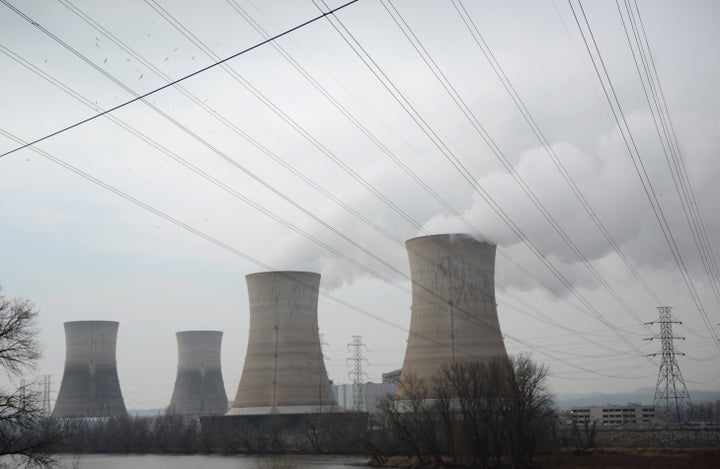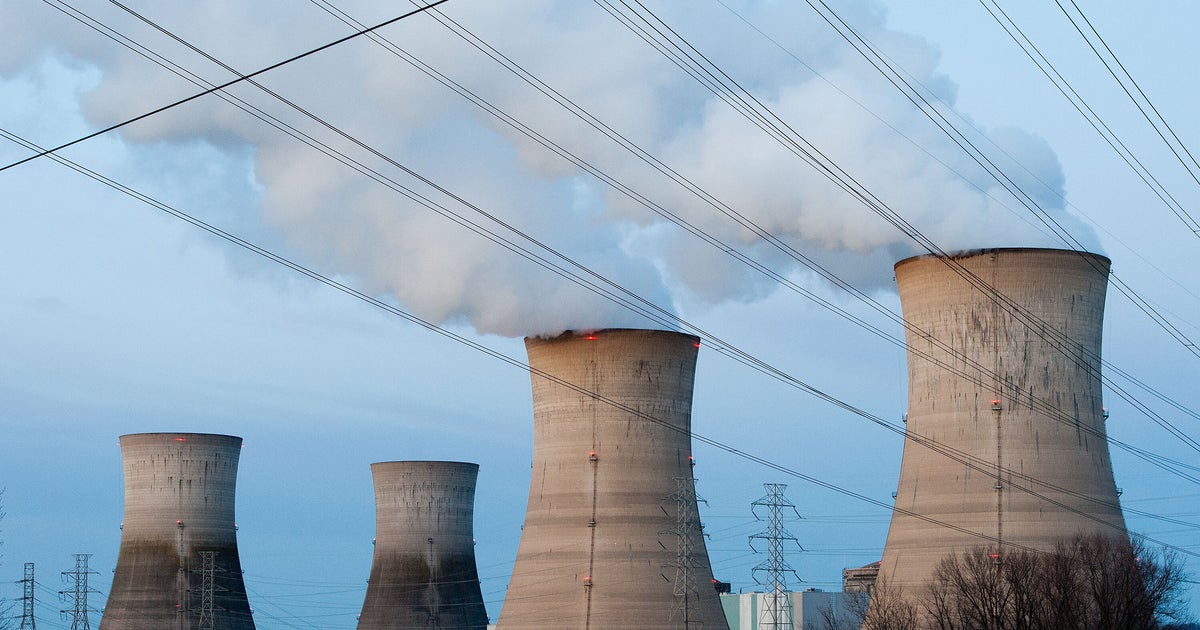In 1979, the Three Mile Island nuclear plant came to embody Americans’ fears about atomic energy, after one of its two reactors partially melted down in what became the worst accident in the U.S. industry’s history, despite no one dying or getting sick from radiation.
Now the Londonderry, Pennsylvania, facility could become a symbol of nuclear power’s turnaround.
In a landmark deal announced Friday, Microsoft agreed to pay $16 billion to restart the plant’s second reactor, which shut down in 2019 under financial pressure from growing competition with cheap natural gas. It’s part of the tech giant’s efforts to secure enough reliable, low-carbon electricity to supply energy-thirsty data centers powering the boom in artificial intelligence.
While the Unit 2 reactor destroyed in 1979 is undergoing decommissioning, Microsoft said it would buy up to 100% of the electricity produced from refurbishing the more recently shuttered Unit 1 for the next 20 years.
The plant’s owner, Baltimore-based Constellation Energy, predicted Unit 1 could come back online as early as 2028, and said it would apply for a license to continue operating the unit for at least the next 30 years. The nation’s largest reactor operator pledged to spend $1.6 billion on the restart project.
“Before it was prematurely shuttered due to poor economics, this plant was among the safest and most reliable nuclear plants on the grid,” Joe Dominguez, Constellation’s chief executive, said in a statement. “We look forward to bringing it back with a new name and a renewed mission to serve as an economic engine for Pennsylvania.”
Deals like this ― long-term, power-purchase agreements against which energy developers can borrow money to build new generating stations ― helped buoy the growth of renewables like wind and solar over the past decade, as tech companies sought to offset the planet-heating emissions from their data centers’ demand for electricity generated with fossil fuels.

MediaNews Group/Reading Eagle via Getty Images
But the impact on overall emissions was limited, since the wind doesn’t blow and the sun doesn’t shine at all hours that the servers powering the internet are humming along. Silicon Valley behemoths largely ignored nuclear power, which was still considered taboo in some circles.
At first, the discrepancy wasn’t an obvious problem, since nationwide demand for electricity had remained relatively flat since the 1990s.
But computers processing AI software ― coupled with the need for more power to produce hydrogen fuel and convert fossil-fueled cars, stoves and heaters to electricity ― is sending demand surging at the very moment when the U.S. is trying to transition away from the oil, gas and coal that still generate the overwhelming majority of electrons on the grid.
The challenges of weather-dependent renewables that require vast amounts of land and minerals, and that increase reliance on imports from China, put a new premium on nuclear power ― the most efficient electricity source ever harnessed, with its 24/7 output of zero-carbon electricity.
If successful, the restart of Unit 1 at Three Mile Island would be the second such resurrection in the U.S.
No reactor switched off for permanent decommissioning has ever come back. But in Michigan, where the Palisades nuclear plant became the most recent U.S. station to shut down for financial reasons in 2022, owner Holtec International is seeking to bring the single-reactor facility back online next October with the help of a $1.5 billion loan from the Biden administration.
Another facility, the Duane Arnold Energy Center, which utility giant NextEra Energy closed in Iowa in 2020, is widely considered another potential candidate for restart.
Few other mothballed plants are contenders for revival. But the size of Microsoft’s investment could set the stage for other large tech companies to help finance something that energy modelers say is even more crucial: brand-new nuclear reactors.
The U.S. only just completed its first two new reactors built from scratch in decades at the Alvin W. Vogtle Electric Generating Plant in northeastern Georgia earlier this year. The two additional units at so-called Plant Vogtle were the first of a new design of large-scale reactors that the nuclear giant Westinghouse designed in the early 2000s as the intended workhorse of an American atomic renaissance. The Georgia project was to be the first of potentially dozens.
Instead, cost overruns, poor project management and political blowback from the 2011 nuclear accident in Fukushima, Japan, led to the cancellation of all reactors except Plant Vogtle’s. The U.S. pivoted away from nuclear to focus on cheap renewables backed up by natural gas made abundant through the American drilling boom.

Yet by the time the two new reactors came online in Georgia, things had changed. The threat of methane, the super-heating greenhouse gas that is the primary ingredient in natural gas, cast doubt on the wisdom of depending so heavily on a fossil fuel in order to move away from slightly dirtier coal. The risk of relying too much on weather-dependent renewables that require vast areas of land, backup storage and expanded transmission lines became more widely understood. And the dangers of a system that uses gas that needs to be constantly resupplied in pipelines, and renewables that don’t always work, grew more visible as the duration of U.S. blackouts more than doubled over the past decade.
Then, in February 2022, Russia invaded Ukraine, immediately demonstrating how easily an adversarial supplier could sow chaos by cutting off shipments to pipelines heading west into Europe. With China dominating the supply chains for renewables and the metals needed to produce them, fears grew that gas wasn’t the only vulnerability.
While Russia still plays a dominant role in exports of uranium, reactors only need to be refueled every few years, and require relatively small amounts of the enriched, radioactive metal to produce huge volumes of electricity.
Still, the U.S., like the West overall, remains far behind Russia and China in developing and building nuclear reactors at home and abroad.
The federal government pumped billions of dollars into the industry through subsidies and grants in President Joe Biden’s landmark climate-spending and infrastructure laws.
After the challenges with the Plant Vogtle buildout, however, few utilities ― whose executives all came of age during a period when electricity growth was flat ― were willing to risk the money on new reactors, especially novel designs where the first-of-a-kind would inevitably cost far more than identical models built later.
This is particularly true in so-called deregulated electricity markets, which cover most of the U.S. outside the Southeast. Under the traditional model that states like Georgia and North Carolina still follow, a utility receives a monopoly over power stations, distribution lines and sales to customers, and sets rates with elected commissioners. Starting in the 1990s, however, most of the U.S. transitioned to deregulated markets that broke up those vertically integrated utilities into individual companies, in the belief that competition would bring down electricity prices.
What actually ended up happening is that the markets eliminated any incentive for a big utility to plan for the holistic needs of the grid system over time, leading to decaying infrastructure and the loss of financial incentives to prioritize the long-term quality of a power plant over how cheap it is to build. Since gas plants and renewables are cheap to build, nuclear plants struggled to keep up.

“There’s no long-term planning aspect in these deregulated generation markets. None whatsoever,” said Steve Nesbit, the former president of the American Nuclear Society, the leading public-interest nonprofit bringing together academics and industry professionals. “It’s just a blind faith that the market will take care of things and everything will be fine.”
But the market’s wisdom only extends to the near term, he said, meaning that spending billions for a new nuclear plant that takes a decade to construct when there are cheaper alternatives like gas or solar is nearly impossible.
“That system is not ideal,” Nesbit said. But he warned that reversing the ’90s-era regulatory reforms is still a distant prospect politically.
Direct deals between a big electricity buyer and the nuclear plant owner help circumvent the market conditions that hurt the economics of atomic stations. Unless utilities or governments find ways to start building new reactors in deregulated markets, however, agreements like Microsoft’s risk shifting atomic generators’ clean power away from the grid.
Ratepayers’ bills helped fund the buildout of existing nuclear plants like Three Mile Island. But Microsoft’s data centers will consume most if not all of the electricity the restored unit produces.
As a result, cities near nuclear plants that could be restored or kept online by selling power directly to big corporate buyers could “lose a lot of their power supplies to tech companies who appreciate nuclear before the city officials themselves do,” said Mark Nelson, founder of the nuclear consultancy Radiant Energy.
“This deal is a warning to cities they’re going to lose their power next and the starting gun to build new nuclear plants to make up for it,” he said.
Support Free Journalism
Support HuffPost
Already contributed? Log in to hide these messages.
“Microsoft is saying they want billions of dollars of nuclear electricity at a cost high enough to build new nuclear plants,” he added. “So now’s the time to build.”
Support Free Journalism
Support HuffPost
Already contributed? Log in to hide these messages.







